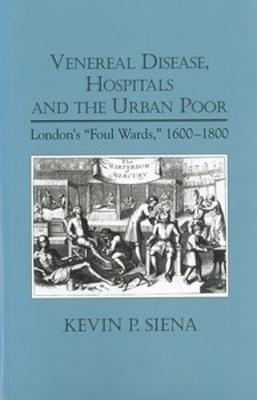
Venereal Disease, Hospitals and the Urban Poor
London's "Foul Wards," 1600-1800
Seiten
2010
University of Rochester Press (Verlag)
978-1-58046-371-3 (ISBN)
University of Rochester Press (Verlag)
978-1-58046-371-3 (ISBN)
A re-examination of the role of charity and treating venereal disease in public hospitals in early-modern London.
This book explores how London society responded to the dilemma of the rampant spread of the pox among the poor. Some have asserted that public authorities turned their backs on the "foul" and only began to offer care for venerealpatients in the Enlightenment. An exploration of hospitals and workhouses shows a much more impressive public health response. London hospitals established "foul wards" at least as early as the mid-sixteenth century. Reconstruction of these wards shows that, far from banning paupers with the pox, hospitals made treating them one of their primary services. Not merely present in hospitals, venereal patients were omnipresent. Yet the "foul" comprised a unique category of patient. The sexual nature of their ailment guaranteed that they would be treated quite differently than all other patients.
Class and gender informed patients' experiences in crucial ways. The shameful nature of the disease, and the gendered notion of shame itself, meant that men and women faced quite different circumstances. There emerged a gendered geography of London hospitals as men predominated in fee-charging hospitals, while sick women crowded into workhouses. Patients frequently desired to conceal their infection. This generated innovative services for elite patients who could buy medical privacy by hiring their own doctor. However, the public scrutiny that hospitalization demanded forced poor patients to be creative as they sought access to medical care that they could not afford. Thus, Venereal Disease, Hospitals and the Urban Poor offers new insights onpatients' experiences of illness and on London's health care system itself.
Kevin Siena is assistant professor of history at Trent University.
This book explores how London society responded to the dilemma of the rampant spread of the pox among the poor. Some have asserted that public authorities turned their backs on the "foul" and only began to offer care for venerealpatients in the Enlightenment. An exploration of hospitals and workhouses shows a much more impressive public health response. London hospitals established "foul wards" at least as early as the mid-sixteenth century. Reconstruction of these wards shows that, far from banning paupers with the pox, hospitals made treating them one of their primary services. Not merely present in hospitals, venereal patients were omnipresent. Yet the "foul" comprised a unique category of patient. The sexual nature of their ailment guaranteed that they would be treated quite differently than all other patients.
Class and gender informed patients' experiences in crucial ways. The shameful nature of the disease, and the gendered notion of shame itself, meant that men and women faced quite different circumstances. There emerged a gendered geography of London hospitals as men predominated in fee-charging hospitals, while sick women crowded into workhouses. Patients frequently desired to conceal their infection. This generated innovative services for elite patients who could buy medical privacy by hiring their own doctor. However, the public scrutiny that hospitalization demanded forced poor patients to be creative as they sought access to medical care that they could not afford. Thus, Venereal Disease, Hospitals and the Urban Poor offers new insights onpatients' experiences of illness and on London's health care system itself.
Kevin Siena is assistant professor of history at Trent University.
The Foul Disease, Privacy, and the Medical Marketplace
The Foul Disease in the Royal Hospitals: The Seventeenth Century
The Foul Disease in the Royal Hospitals: The Eighteenth Century
The Foul Disease and the Poor Law: Workhouse Medicine in the Eighteenth Century
The Foul Disease and Moral Reform: The Lock Hospital
Rethinking the Lock Hospital
| Erscheint lt. Verlag | 1.10.2010 |
|---|---|
| Reihe/Serie | Rochester Studies in Medical History |
| Zusatzinfo | 12 b/w illus. |
| Verlagsort | Rochester |
| Sprache | englisch |
| Maße | 152 x 229 mm |
| Gewicht | 1 g |
| Themenwelt | Medizin / Pharmazie ► Medizinische Fachgebiete ► Dermatologie |
| Studium ► Querschnittsbereiche ► Geschichte / Ethik der Medizin | |
| ISBN-10 | 1-58046-371-1 / 1580463711 |
| ISBN-13 | 978-1-58046-371-3 / 9781580463713 |
| Zustand | Neuware |
| Haben Sie eine Frage zum Produkt? |
Mehr entdecken
aus dem Bereich
aus dem Bereich
Die Geschichte eines Weltzentrums der Medizin von 1710 bis zur …
Buch | Softcover (2021)
Lehmanns Media (Verlag)
CHF 27,90
Krankheitslehren, Irrwege, Behandlungsformen
Buch | Softcover (2024)
C.H.Beck (Verlag)
CHF 55,90


